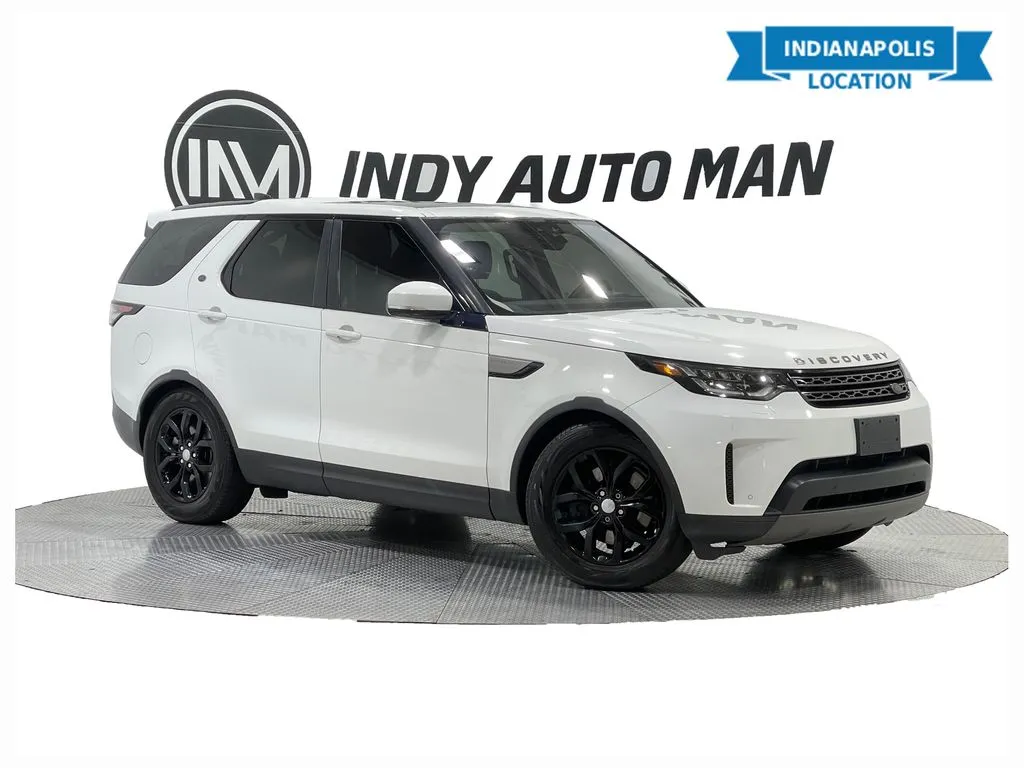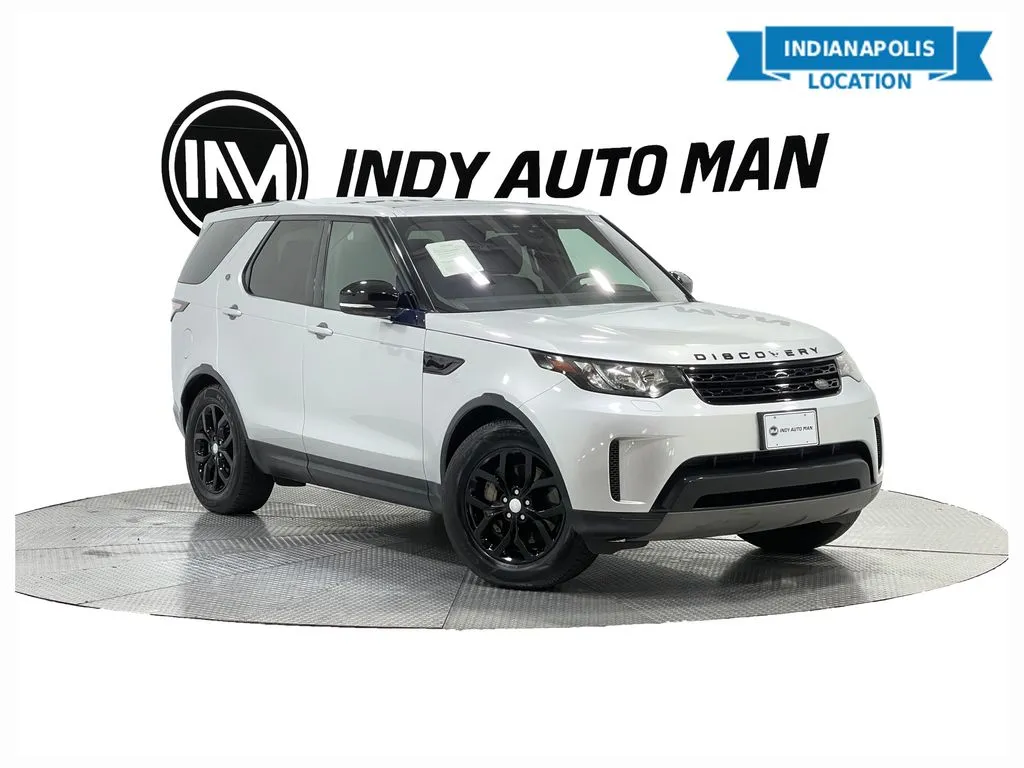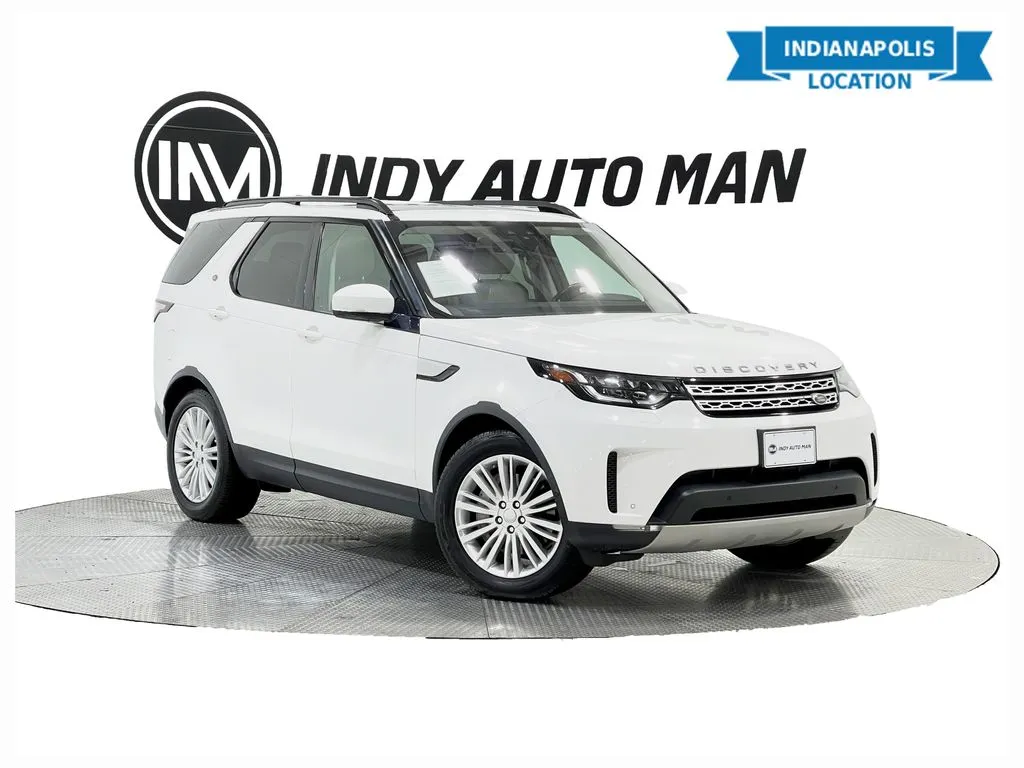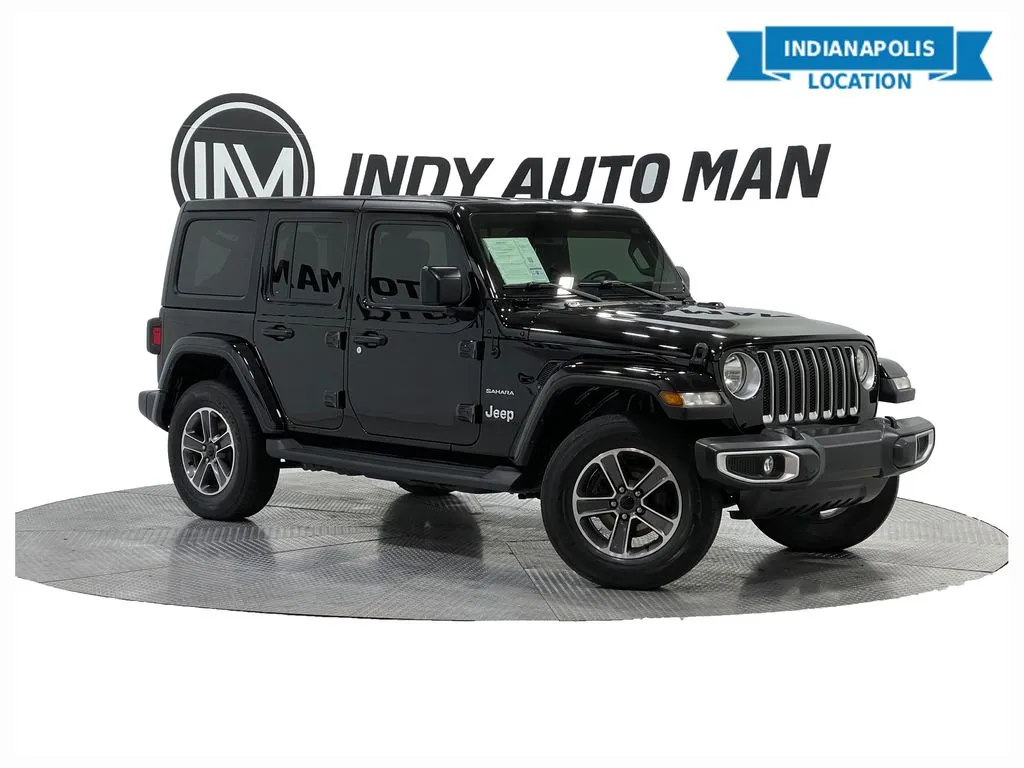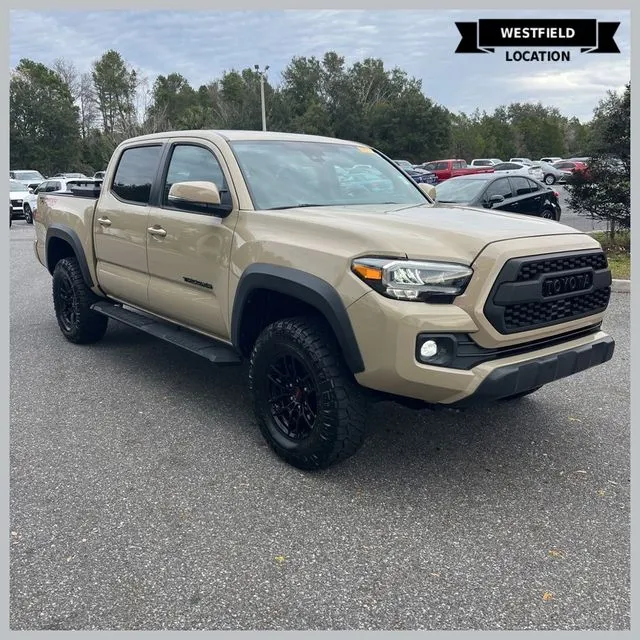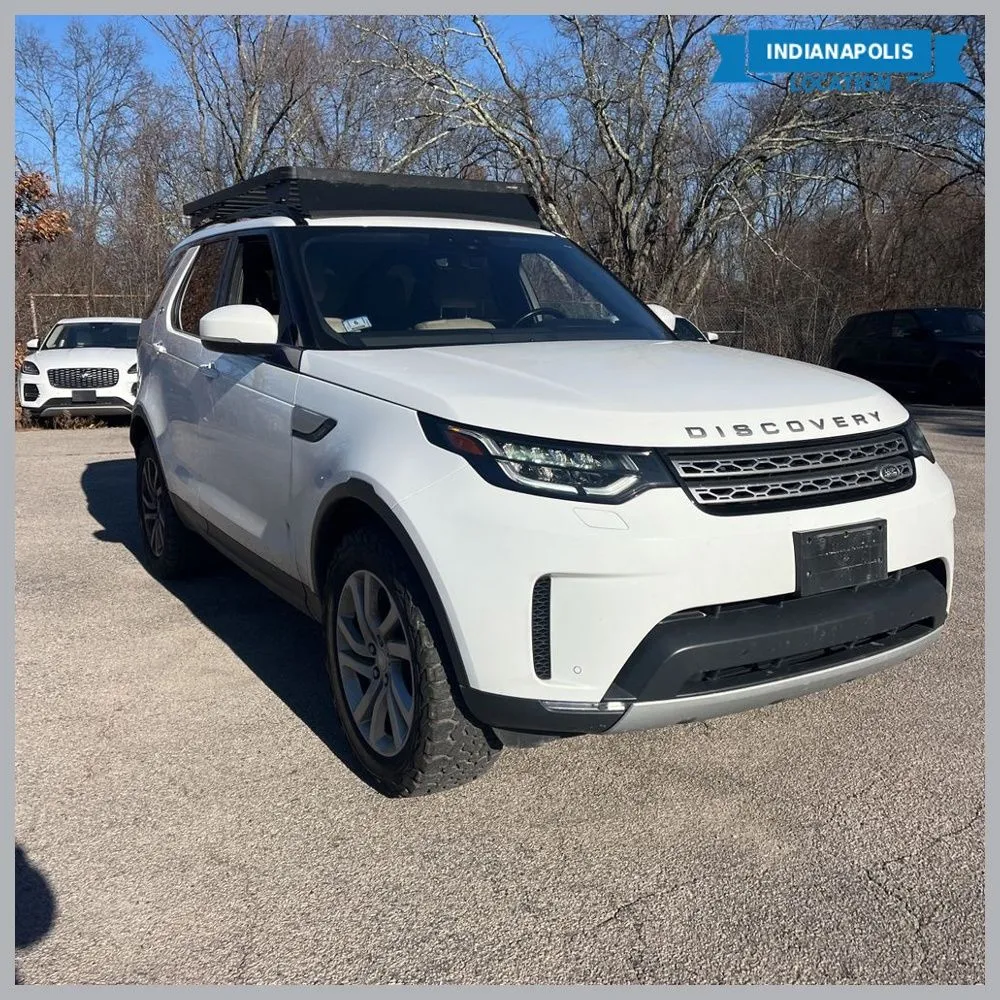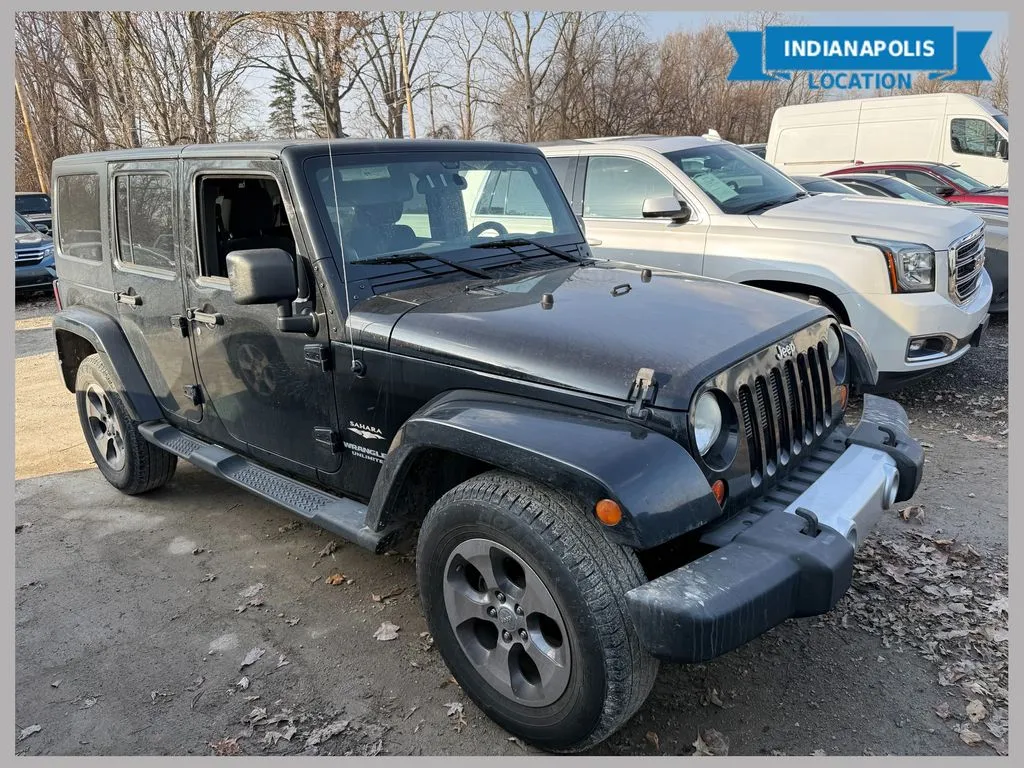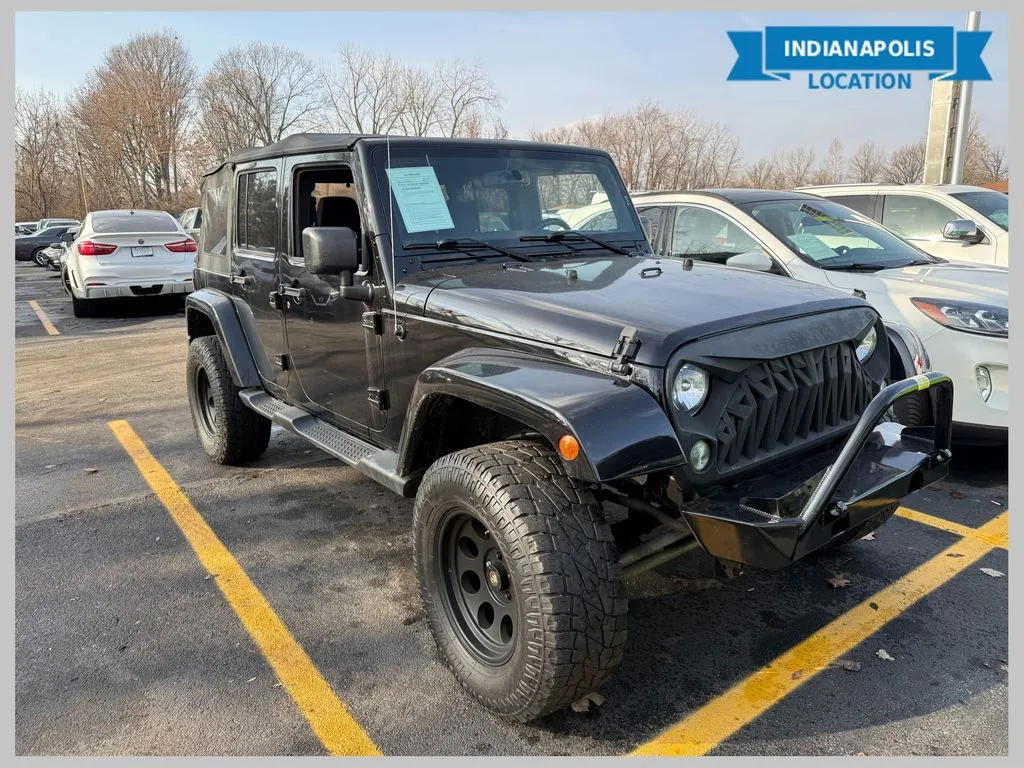Used AWD Cars: Choosing Your Best Off-Roader
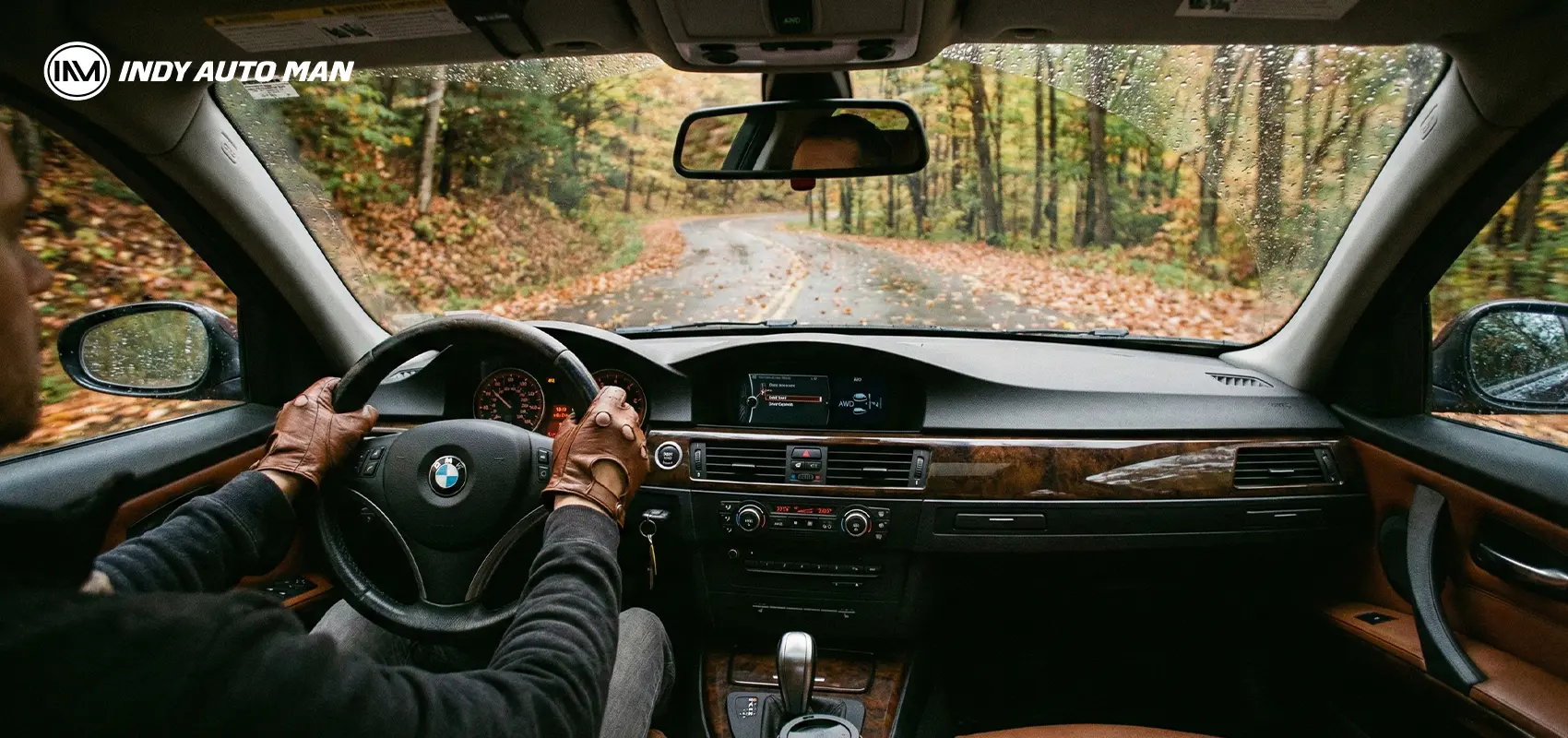
Read this guide in to AWD autos, edited by Indy Auto Man dealer's technicials, to make an informed decision.An all-wheel-driven car (AWD) is a dream of many drivers. It has better handling and advanced safety. However, such a transmission significantly increases the cost of the car, while most people face off-road problems only on curbs or in a parking lot covered with snow.
If you are going to buy a used AWD car in 2025, our comprehensive guide will help you clear up the options for such transmission and define the pros and cons of each type.
Types of AWD Cars
An all-wheel-drive vehicle is a car with a set of technical solutions that provide a permanent or temporary (depending on the model) ability to transmit torque to all wheels. Since its inception, AWD has been used exclusively on SUVs. But in the 80s, to efficiently use engine power on any surface, Audi began equipping its models with Quattro all-wheel drive. Later, the four-wheel drive has been used on a variety of passenger cars to improve active safety and driving performance.
A typical all-wheel-drive vehicle is equipped with a front-mounted engine. From it, the power flow is directed first to the clutch, then to the gearbox. After that, the power flow must be divided into two – for the front and rear axles. This is where the options begin.
Part-Time AWD
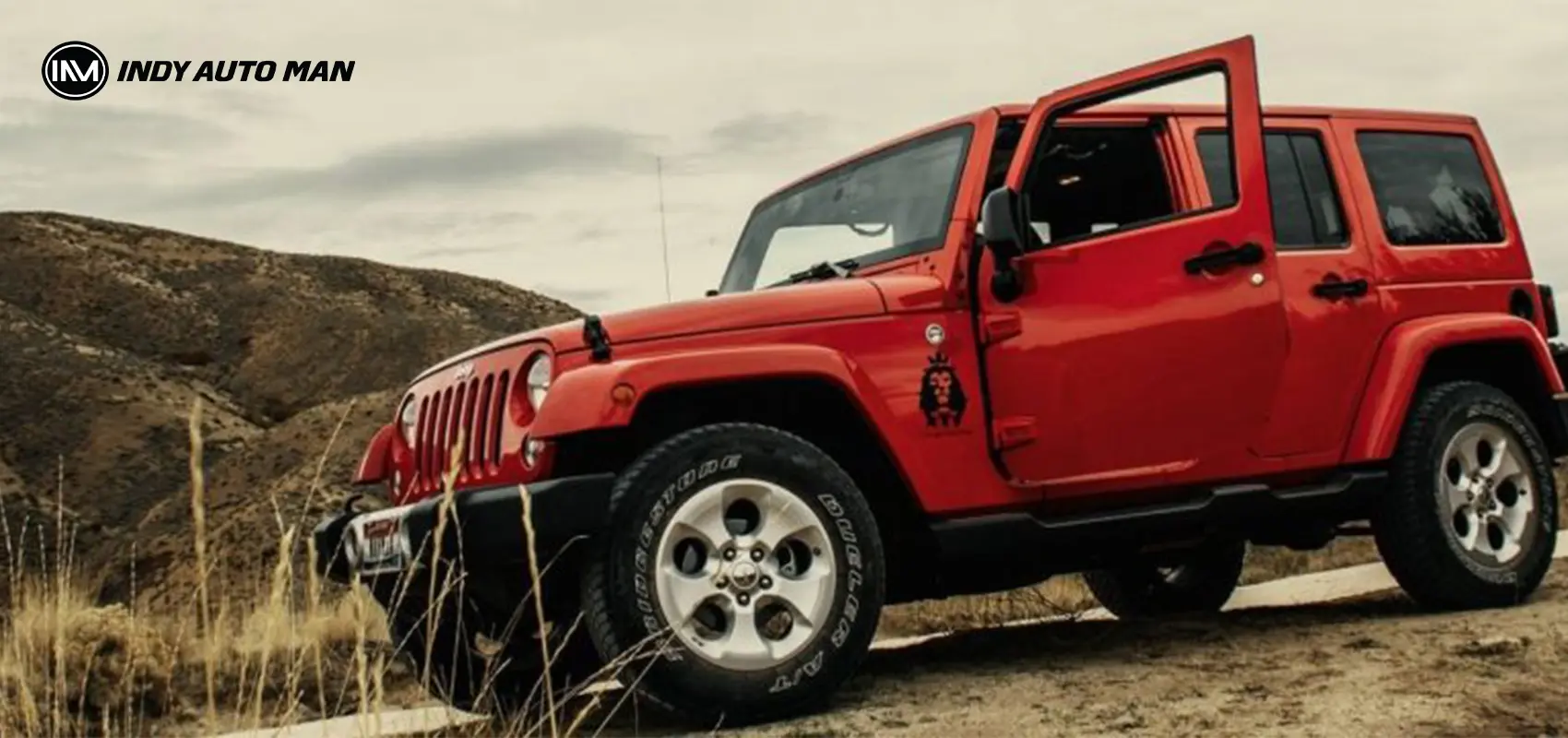
Pros:
- Simplicity and reliability;
- Ability to turn off 4WD to save fuel.
Cons:
- Use restrictions on hard surfaces;
- Handling deterioration in 4WD mode.
Part-time is the simplest forced-on all-wheel-drive system, traditional for SUVs since the military Jeep Willys. Due to its utility, it is less common on modern vehicles. The exception is Suzuki Jimny, which remains with the same 4WD as all previous models. Also, part-time is used by:
- Toyota Land Cruiser 70, Fortuner and FJ Cruiser;
- Jeep Wrangler;
- Toyota Tacoma and Tundra;
- Nissan Navara;
- Mazda BT-50.
The part-time scheme is called rigid – when 4WD is turned on, the front and rear axles of the car are directly connected, without a differential, which imposes restrictions on such an all-wheel drive. Part-time was created for temporary connection: on the ground, in mud, in the sand, in snow, on ice – wherever the wheels can slip a little when cornering, compensating for the lack of a differential. When returning to the clean highway, the four-wheel-drive must be disabled. Therefore, the part-time scheme is not very convenient in urban conditions and at high speeds.
Full-Time or On/Off 4WD
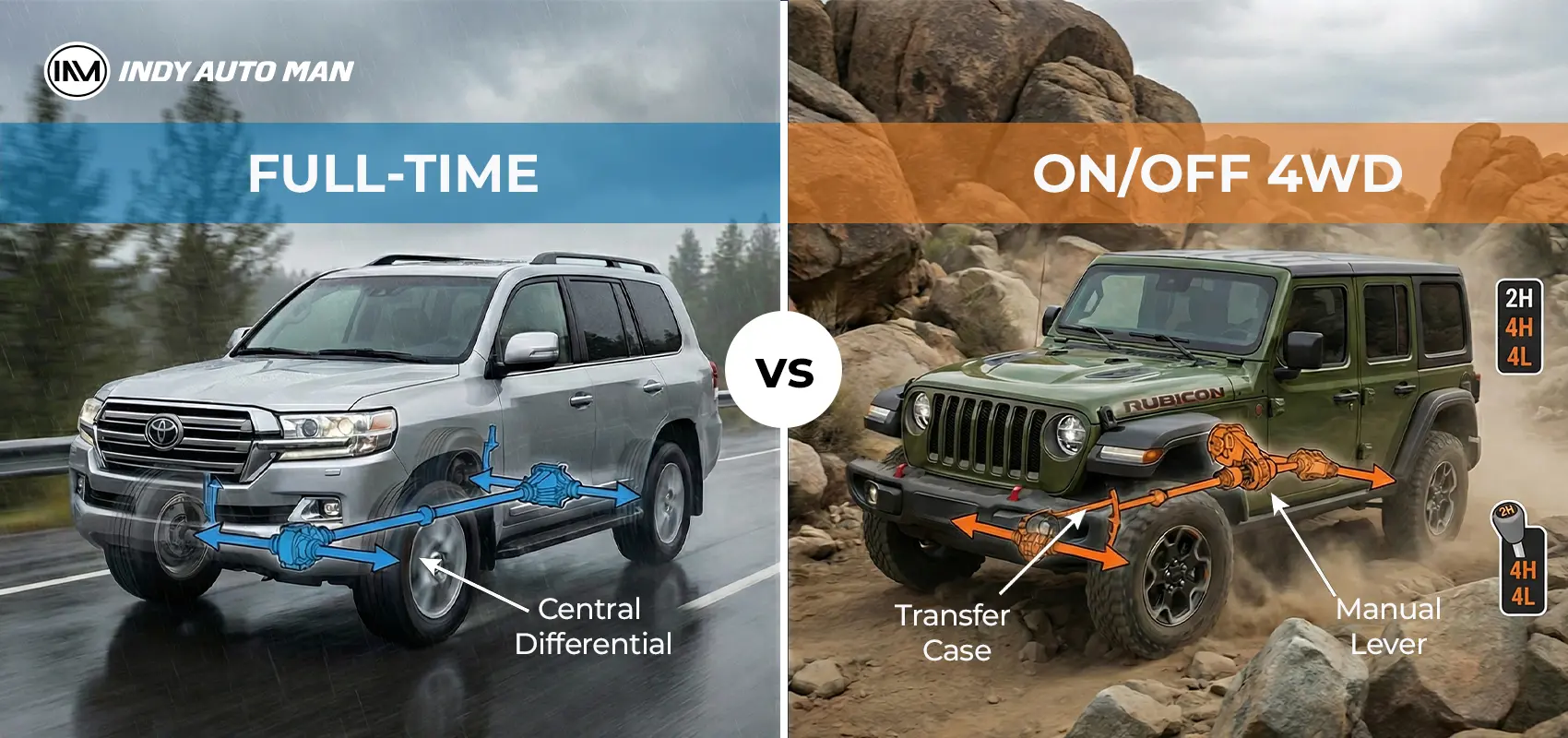
In the full-time scheme, there is no way to turn off 4WD. The drive wheels are always connected to the engine, and for normal driving, a third – central – differential is installed between the axles. Many cars are equipped with the full-time all-wheel-drive:
- Toyota Land Cruiser, Land Cruiser Prado;
- Land Rover Discovery, Defender;
- Volkswagen Touareg.
Serious off-roaders, such as Jeep Wrangler, may have two ranges: low for heavy off-road and high for highway driving.
Is a Full-Time AWD Good or Bad?
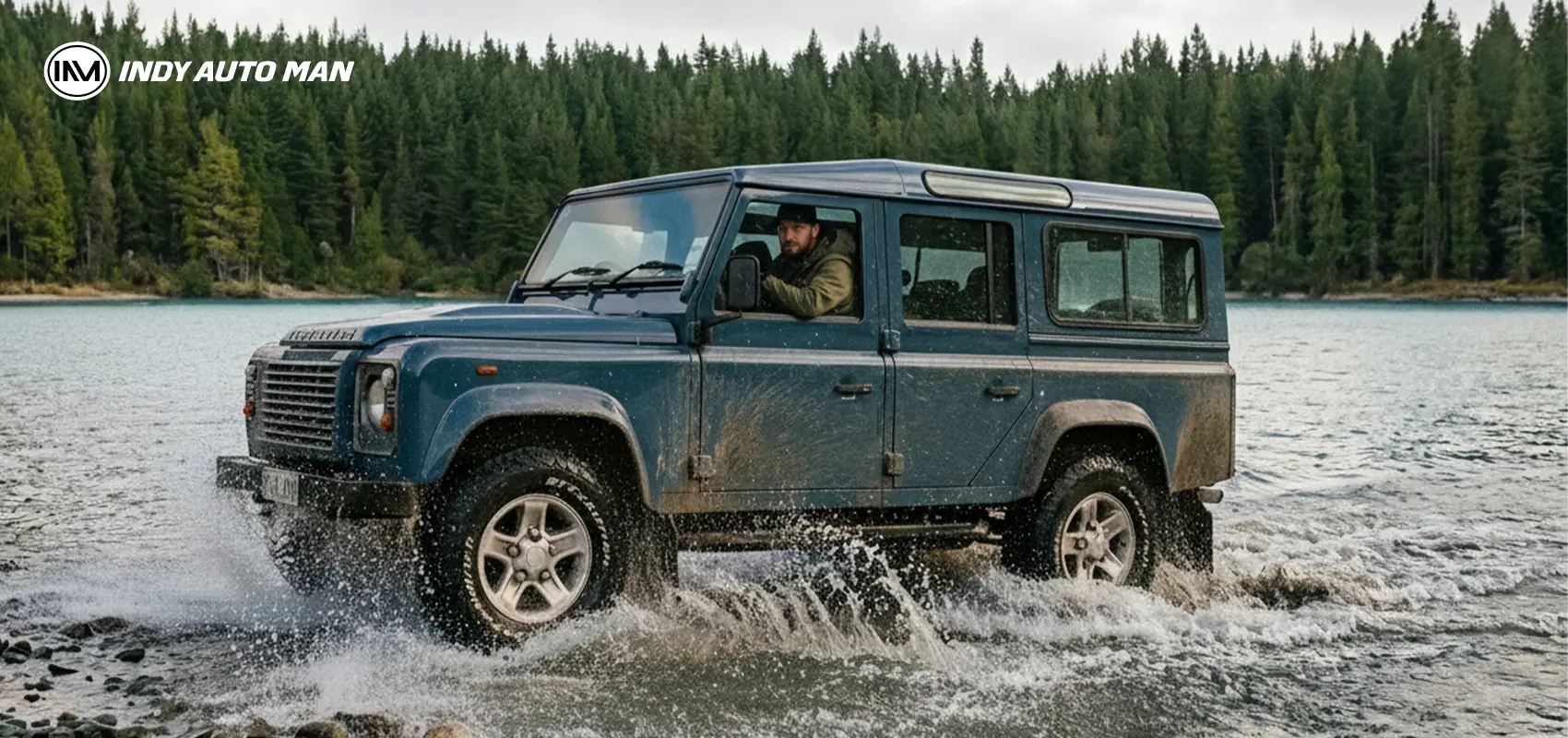
Pros:
- Simplicity and reliability;
- Ability to drive 4WD on any surface.
Cons:
- Center differential blocking necessity;
- Increased fuel consumption.
The center differential of the classical design has a significant innate drawback: it directs traction along the path of least resistance. A car with a proud FULL-TIME 4WD nameplate gets into deep sand or mud with just one wheel and cannot move – the wheel skids helplessly in the mud. The differentials, center first, then cross-axle, direct torque to the wheel that is easiest to turn. That is, where the grip is worst. A differential lock is required to prevent such awkward situations – a forced limitation of free rotation.
Automatic AWD
The vast majority of cars with increased ground clearance are front-wheel drive by default. At the same time, about half of them have the all-wheel-drive version. This all-wheel drive is far from the one discussed above.
In normal mode, the car remains conditionally mono-drive, and the second drive axle is activated only when the first one is slipping. Of course, more often, traction is transmitted through a viscous or friction clutch without any differentials.
The increased clearance and road tires – typical SUVs features – let them be classified as off-road vehicles. But this 4×4 mode is designed for short-term use, and the torque on the wheels is not enough to deal with a difficult road – mud, deep snow, stones, unfavorable terrain.
AWD Problems
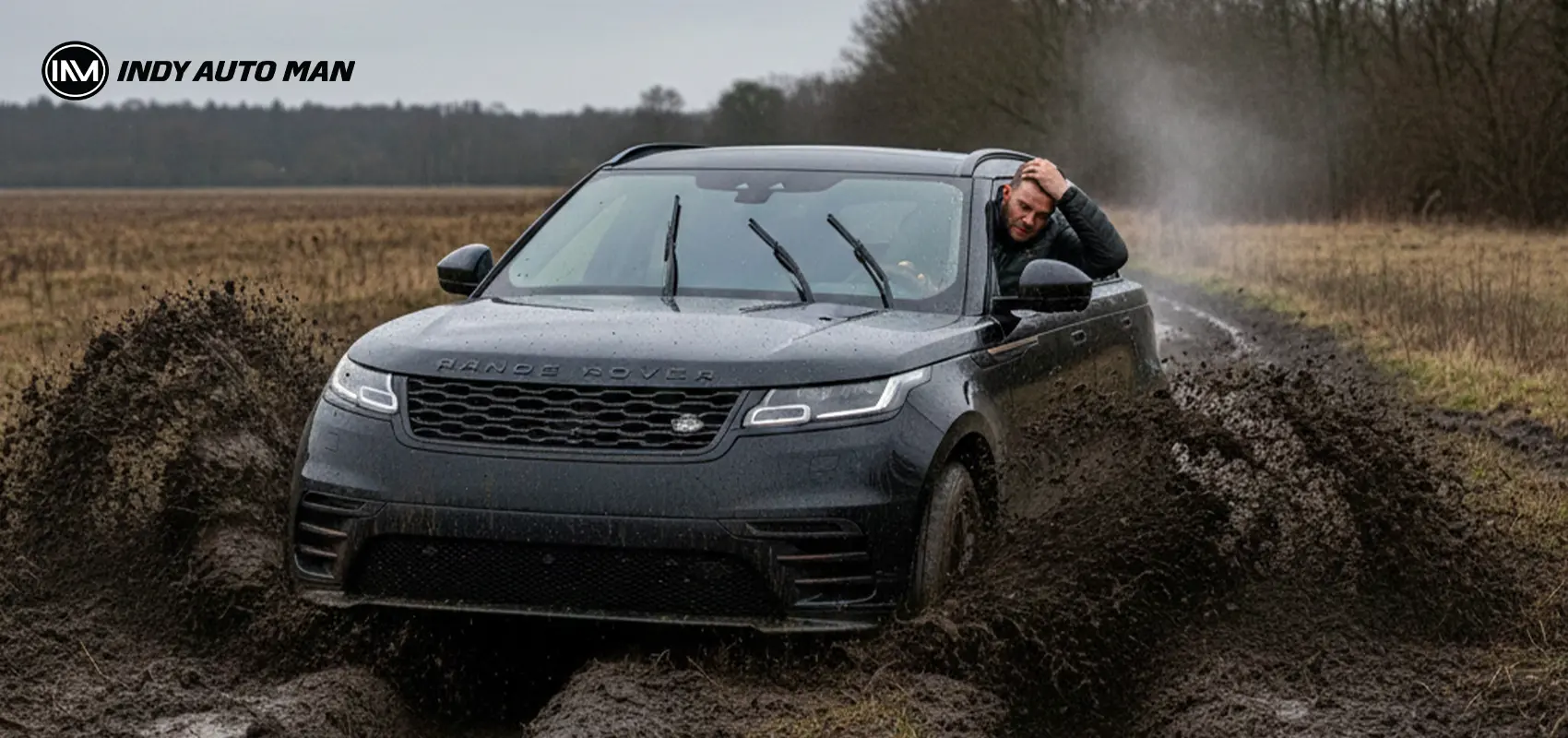
Pros:
- Automatic operation without driver intervention;
- Auto shut off 4WD to save fuel.
Cons:
- Failures and overheating of couplings during active slipping;
- Inability to use on serious off-road.
This AWD type lacks a separate transfer case with a rigid connection. This ensures reliable transmission of power to all four wheels and increases torque to them. The problem is that the union of the second pair of wheels here does not provide a mechanical connection but an electronically controlled clutch. When activated, it overheats quickly. The second axle of most modern AWD SUVs is connected by a multi-plate clutch, which is not intended for long-term operation in a tensor state.
Another reason for the imperfection of all-wheel drive in urban crossovers is the automatic connection of the second axle. The 4×4 mode is activated by a command from sensors that monitor the slip of the main driving wheels. The manufacturers are constantly increasing the speed of these sensors, but often they are still late with the connection of the second pair of wheels so that the car has time to bury itself in sand, mud, or snow.
AWD for Sedans
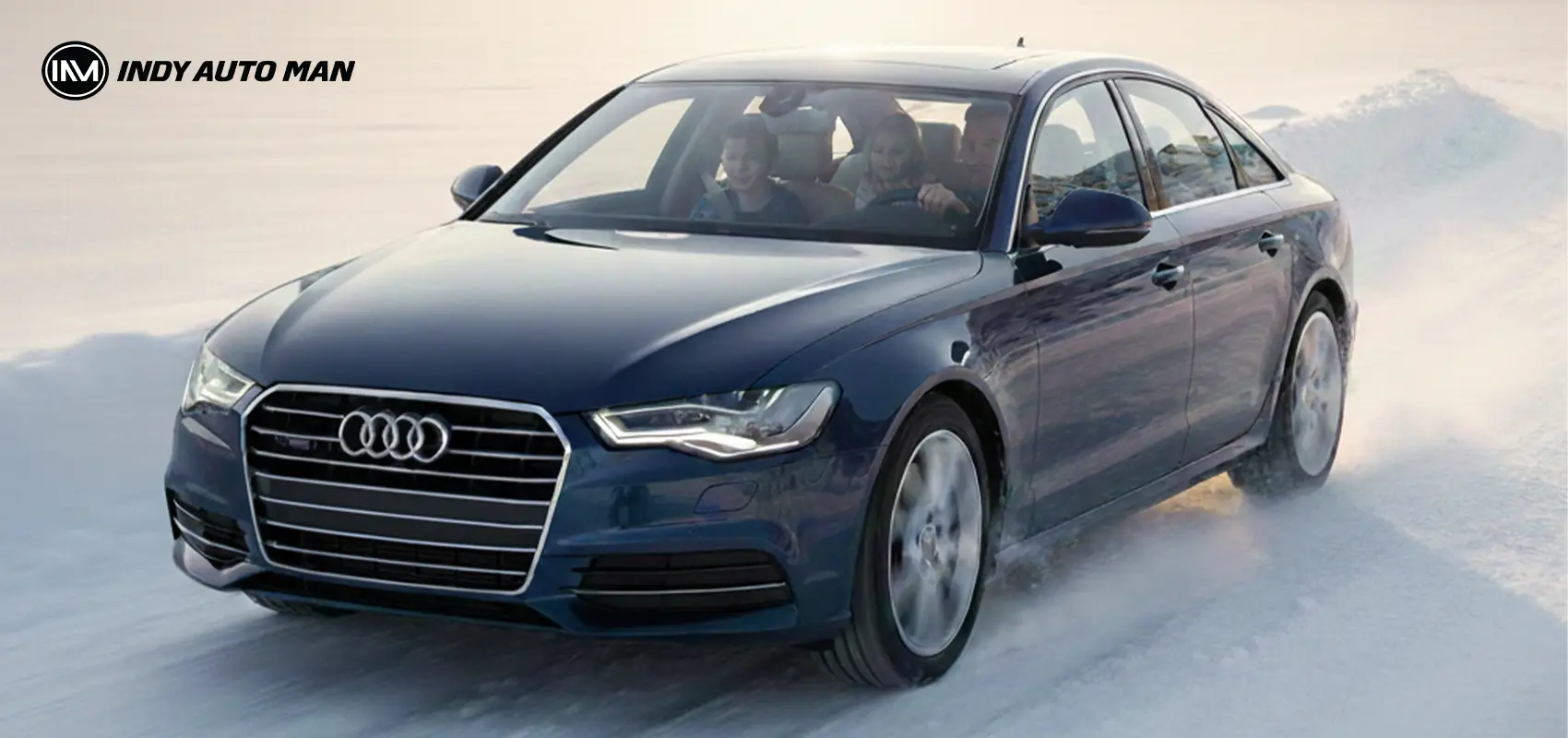
AWD is efficient not only for SUVs. Many passengers and sports cars also have four-wheel drive, although the purpose of this equipment may be different.
Four-wheel drive for a family sedan is:
- A more confident drive on a snowy and slippery road.
- More safety when cornering at high speed.
Electronic systems distribute the torque between the wheels so that the car fits better into the track curves. The outer wheels get more traction (with the front – slightly less than the rear), and the inner ones – less (the rear ones have the smallest share).
On curves, each wheel overcomes its path. By distributing the torque between them, you can improve the controllability of the car.
In sports cars, all-wheel drive allows the better realization of the engine’s potential. On an FWD car, a large torque often breaks the drive axle into slipping when starting or changing gears. And when the torque is distributed over four wheels, the beginning of slipping occurs almost twice as late.
Are AWD Systems Reliable on Older Used Cars?
AWD systems are generally reliable but can require more maintenance as the vehicle ages due to the complexity of their components—differentials, transfer cases, and electronically controlled clutches all wear over time. Older AWD vehicles may experience issues like fluid leaks, worn seals, or clutch failures if not properly maintained.
Regular servicing of the AWD system, including fluid changes and inspections, greatly extends its life. When buying an older used AWD car, review the maintenance history carefully—look for consistent AWD system upkeep, ideally from authorized service centers. Neglected AWD maintenance can lead to costly repairs, but a well-maintained AWD drivetrain remains dependable for many years.
Which All-Wheel Drive Is Better?
The best AWD is the one that suits your tasks more.
- If you conquer off-road terrain, a reliable part-time will be helpful.
- If you want a more versatile car – choose full-time.
- And if you rarely drive off the highway, then the automatic AWD is fine.
Visit the Indy Auto Man used car dealership to test and buy AWD vehicles in Indianapolis that best suits your needs.
Pre-owned
Pre-owned
Pre-owned
Pre-owned
Pre-owned
Pre-owned
Pre-owned
Pre-owned
Pre-owned
Pre-owned
Pre-owned
Pre-owned
Pre-owned
Pre-owned
Pre-owned












































































